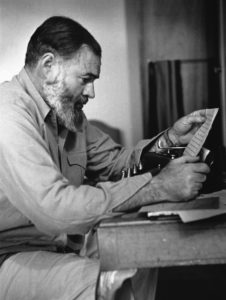by Beth Hines
I have learned something new in my energy healing work.
My back has been injured and re-injured over the last few years, mostly because I think I’m invincible in the garden. I don’t listen to those messages that tell me when I’m tired. I push on because I have just one more little thing to do, and that’s when the over-do-it happens.
Doesn’t it come on slowly? You think you have avoided the problem until just a little later in the day. By that time, all the ice in the fridge won’t help. I had gotten to the point where I could not sit down because the pain was so great. I tried traditional chiropractic, and then network chiropractic. While each one offered some assistance, the pain didn’t stop. I broke down and went to the doctor, not because I wanted drugs or surgery, but I did want a diagnosis.
Severe bulge at L4-5 and a moderate bulge at L1-2.
OK so that explains it.
The surgeon said we can do surgery or ‘conservative measures,’ to which I agreed. He got me to the pain management doctor the same day, where I received an epidural steroid injection. It did nothing. About a month later, I went in for the second shot, and that seemed to hit the right spot.
I was feeling so good that three weeks later I went ahead and attended the X27 program at TMI. Unfortunately, the shot wore off on the second day of the program and I was back in excruciating pain. I was sure I had to drop out and take the course at another time. The session that afternoon was to go to the reception center and find somebody going to the medical center. I found a guide bringing a man who had been burned. I followed them to the medical center where the Helpers put the burned guy on a bed in a setting that looked like any emergency room. They flecked off all the burned clothes and skin, and all that was left of him was his shape, which looked like grey gelatin. He was very still. They took a cream and rubbed it all over his body. I thought the show was over, but the Helpers told me to wait. The cream started to dry and crack. White light was streaming through the cracks. The Helpers flecked all that dried cream stuff off and the man stood up. Actually, he was the shape of a man, but just glowing light. The Helpers put a robe over him and he left with his guide.
The Helpers said to me, “What do you think about that?” I said, “Can you fix my back?” They said sure, hop up on the table.
Really – no cleaning or anything!
I was in my CHEC unit on my back, but in the medical center, I was on my belly. I heard one of the Helpers say, “Let’s send some love to it.” Right after that, I felt the bones move in my back, and the pain melted away. It was miraculous! I very cautiously got out of my CHEC unit and lo and behold, the healing was real. I was ever so gentle with my back for the remainder of the program. There is still some ache and I still try to not sit without a lumbar support. I have to move around often.
But really – send love to it? All this time I’ve thought of sending healing energy, wrapping my clients up in white light, etc, but never exactly calling it love. So OK – this is a minor change, but I’ll do it.
Yet there are times when I over-do it, because that’s what Type A people do. A few weeks ago after playing in the garden, I felt that sensation in my back that tells me when I’ve done something it didn’t like. I took a moment and did my usual healing on myself, but when I got to the part where I send love to my physical body, for some reason I added “and all my bodies everywhere.” And that’s when I noticed that my back just kind of relaxed and the sensation went away. My back never relaxes. Usually it takes some time for it to calm down, but this time was different. The healing was immediate. This happened again a few days ago after a long sit at the computer. When I stood up, I couldn’t straighten all the way up. So I took a moment to send loving healing for my back and all my selves everywhere, and my back relaxed and I could get vertical again. There was no residual pain or tightness.
Since then, I have changed my healing routine to include all the selves for me and for everybody else for whom I do remote healing.
I don’t know how or why this new routine works, but for me personally, it’s the difference between hours of pain and feeling better fast.
Here are some questions to ponder:
- Can addressing the oversoul (control center/higher self) be a more effective way of healing?
- Do all of our simultaneous lives receive the benefit of healing sent to the oversoul automatically?
- If healing is sent to this (present time) physical body, does it help the oversoul in any way?
- If healing is sent to a so-called prior life, does it (a) just help that specific life, or (b) does it also help the lives in its future – like a domino effect, or (c) is it like ripples in a pond and affect all lives? Is that different from addressing the oversoul directly?
What do you think? Have you had similar experiences? Is this a good research topic for TMI?
I’ll be interested to hear your responses.

